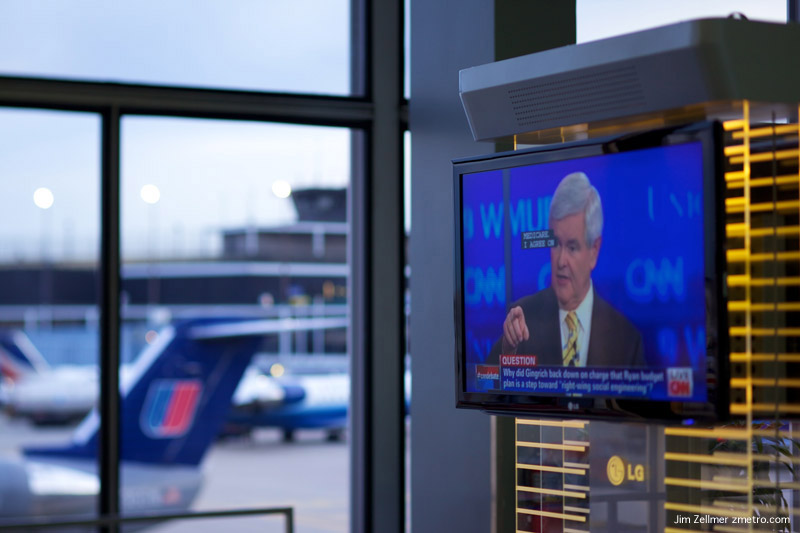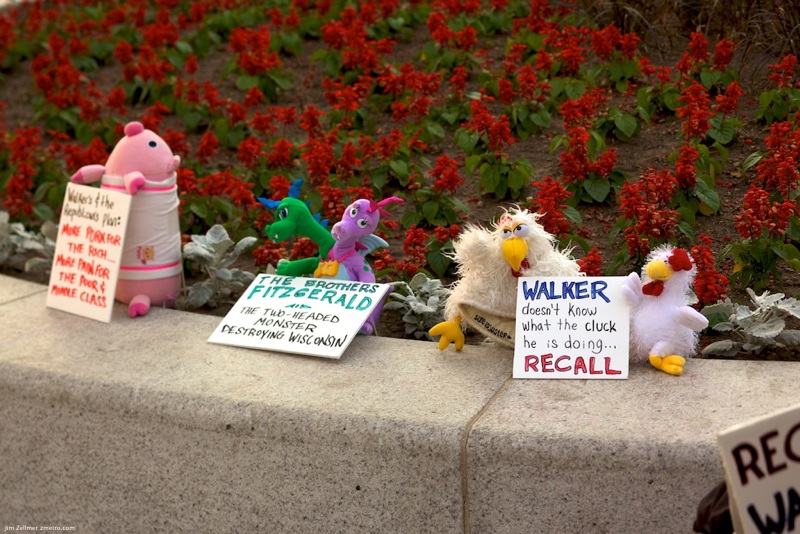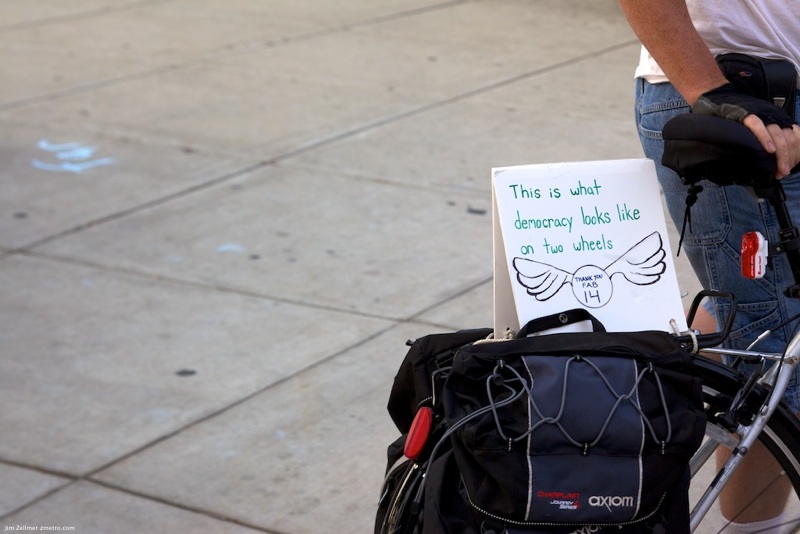As I’m old enough to recall the stereotypes that formed around Vietnam veterans, I’m well aware of this danger. The purpose of my stories has been to participate in the national conversation about the costs of war. JPWREL and VICTOR are correct that the majority of warriors return home without invisible wounds, but it is by no means an “overwhelming” majority. There are an estimated 600,000 veterans (out of 2.2 million who’ve served in OEF and OIF) who are suffering from either stress disorders, MST, or the effects of TBI. The proportion is considerably higher than in previous wars because of multiple deployments and the aggregate number of consecutive days that participants are in a high-conflict environment, thus in a rolling state of stress and hyper-vigilance.
Monday Evening Scene

Visualizing Historical Data, And The Rise Of “Digital Humanities”
All historians encounter them, at some point in their careers: Vast troves of data that are undeniably useful to history–but too complex to make narratively interesting. For Stanford’s Richard White, an American historian, these were railroad freight tables. The reams of paper held a story about America, he knew. It just seemed impossible to tell it.
Impossible to tell in a traditional way, that is. White is the director of the Stanford University Spatial History Project, an interdisciplinary lab at the university that produces “creative visual analysis to further research in the field of history.” (The images in this post are taken from the project’s many visualizations.) Recent announcements on the project site announce “source data now available” (openness is one of the project’s tenets) on such topics as “Mapping Rio,” “Land Speculation in Fresno County: 1860-1891,” and “When the Loss of a Finger is Considered a ‘Minor’ Injury.”
Invasion of the body hackers
Michael Galpert rolls over in bed in his New York apartment, the alarm clock still chiming. The 28-year-old internet entrepreneur slips off the headband that’s been recording his brainwaves all night and studies the bar graph of his deep sleep, light sleep and REM. He strides to the bathroom and steps on his digital scale, the one that shoots his weight and body mass to an online data file. Before he eats his scrambled egg whites with spinach, he takes a picture of his plate with his mobile phone, which then logs the calories. He sets his mileage tracker before he hops on his bike and rides to the office, where a different set of data spreadsheets awaits.
“Running a start-up, I’m always looking at numbers, always tracking how business is going,” he says. Page views, clicks and downloads, he tallies it all. “That’s under-the-hood information that you can only garner from analysing different data points. So I started doing that with myself.”
His weight, exercise habits, caloric intake, sleep patterns – they’re all quantified and graphed like a quarterly revenue statement. And just as a business trims costs when profits dip, Galpert makes decisions about his day based on his personal analytics: too many calories coming from carbs? Say no to rice and bread at lunchtime. Not enough REM sleep? Reschedule that important business meeting for tomorrow.
The founder of his own online company, Galpert is one of a growing number of “self-quantifiers”. Moving in the technology circles of New York and Silicon Valley, engineers and entrepreneurs have begun applying a tenet of the computer business to their personal health: “One cannot change or control that which one cannot measure.”
America’s Hottest Investment: Farmland
This is usually a slow time of the year for farm sales. It’s past prime planting season. Yet, Sam Kain, Des Moines area manager for land sales at Farmers National, is busy. He has 3 auctions this week. Most of the 30 or so bidders who show up will be farmers. But an increasing number of people buying land these days have no intention of planting seeds, at least not themselves. They are investors and a growing number of them are getting interested in farmland.
Just how hot is American farmland? By some accounts the value of farmland is up 20% this year alone. That’s better than stocks or gold. During the past two decades, owning farmland would have produced an annual return of nearly 11%, according to Hancock Agricultural Investment Group. And that covers a time period when tech stocks boomed and crashed, and housing boomed and crashed. So at a time when investors are still looking for safety, farmland is becoming the “it” investment.
Orchid

Madison Farmer’s Market Scenes June 3, 2011




Trout….

The Dilemma
If there is one most frightening thing that war always exposes, even if one is on the winning side, it’s weakness in the supply logistics. While most never consider it, official policy often changes during a war because supplies that are critical to the war effort seem in danger of being disrupted. Such jeopardy, moreover, forces the accountants, economists and politicians waging the conflict to start thinking about how the world will be changed once the fighting has ended.
Few today appreciate the fact that our foreign policy, particularly as it is tied to the Middle East, came about because of just such concerns in the first years of the Second World War. As one might expect, that official policy was based on real fears that America would one day run out of oil.
“The European War”
It was the summer of 1941 and the State Department had requested that the White House include Saudi Arabia in our Lend Lease program. It wasn’t because the Saudis were going to become a direct ally against the European Axis Powers, but because we were about to embargo U.S. oil shipments to Japan. Many believed – correctly, as it turned out – that this would probably lead to hostilities with Japan that would draw us into the war.
Standard Oil of California, which had been drilling for oil in Bahrain for over a decade, now had oil concessions granted by King ibn Saudi. The first six wells Standard drilled into the Arabian desert were nothing to write home about, but when Well No. 7 came in on March 4, 1938, the engineers and wildcatters all knew that Saudi Arabia was going to be an oil bonanza.
Yet on July 18, 1941, Roosevelt refused the request for Lend Lease for Saudi Arabia. He saw no immediate benefit to diverting U.S. dollars overseas simply because Standard had oil concessions there. In any case, the outbreak of the European War in 1939 had reduced oil production in the Kingdom to an insignificant volume — a trickle, considering that American oil amounted to 60 percent of the world’s crude at the time. Instead Roosevelt asked Federal Loan Administrator Jesse Jones to look into the possibility of having England deal with the Saudi King’s pressing needs.
Stupid IT Tricks: Medical Records, or Why a Federal Subsidy Makes No Sense (I Agree)
A reader asked me to write tonight about the Health Information Technology for Economic and Clinical Health Act, which is about as far from something I would like to write about as I can imagine, but this is a full service blog so what the heck. The idea behind the law is laudable — standardized and accessible electronic health records to allow any doctor to know what they need to know in order to treat you. There’s even money to pay for it — $30 billion from the 2009 economic stimulus that you’d think would have been spent back in 2009, right? Silly us. Now here’s the problem: we’re going to go through that $30 billion and end up with nothing useful. There has to be a better way. And I’m going to tell you what it is.
But first a word from my reader: